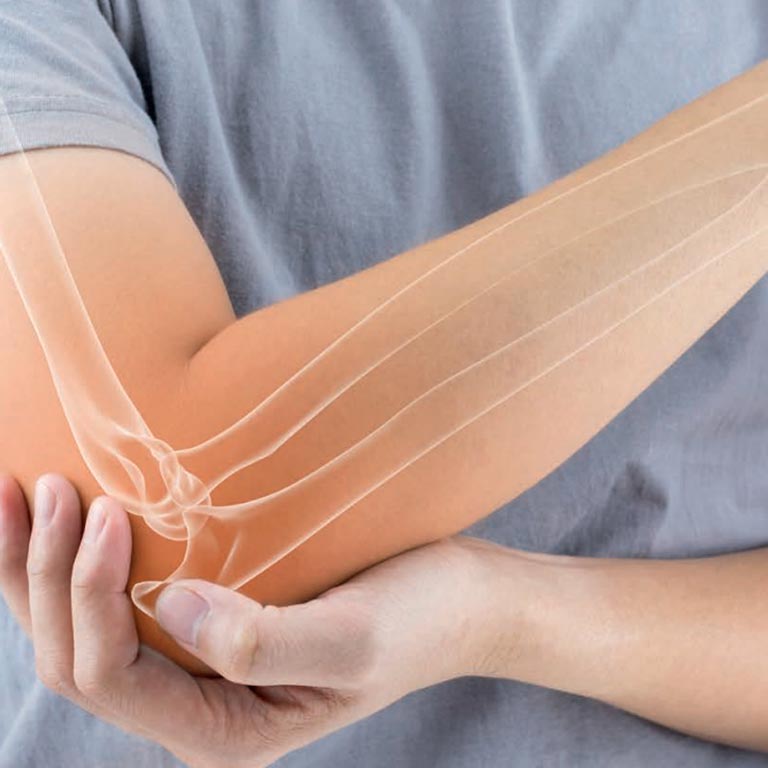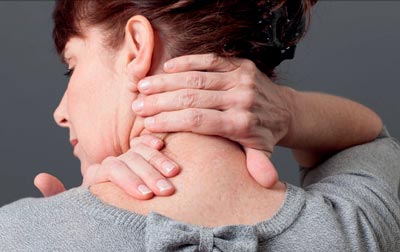
Arthritis: What it is, main kinds and symptoms
What is arthritis?
Arthritis is a disorder of the joints caused by inflammation of the tissue that covers them, causing swelling, pain or redness. Arthritis refers literally to the inflammation of one or more joints, which are areas where two bones are joined and whose main function is to make the body parts move.
"Inflammation of one or more joints
There are over 100 different kinds of arthritis and associated diseases that affect the bones, muscles, joints or the tissues that support them. They can affect both men and women of any age, although the risk of suffering from them increases with age.

Symptoms of arthritis
The main symptoms or warning signs of arthritis may include pain and/or swelling, stiffness or difficulty in moving a joint, but sometimes there is also redness of the affected area or heat.
Arthritis is more likely to affect mainly the hands, neck, knees or hips. When it involves large joints, such as arthritis in the knee, there may be a loss of cartilage with limited movement due to joint damage.
" It mostly affects hands, knees, neck or hips"
When small joints are affected, arthritis may be detected in the hand or fingers, as there may be growth of bone and loss of grip strength of the hand, associated with stiffness.
" Check with your doctor if symptoms remain"
If any of the symptoms remain for one or two weeks, you should check with your doctor, as there are treatments to help reduce pain and stiffness.
What is the cause of arthritis?
There are risk factors that may cause any kind of arthritis. The most important is family history, as certain kinds are hereditary, or the age, which is more common in osteoarthritis.
There are also other factors involved such as a previous injury to the joint affecting any of the ligaments or tendons around it, but also cartilage and bone. people who have been injured at any time, for example through playing sports, are more likely to suffer from arthritis in that joint
Obesity can also cause it, due to the extra weight on the joints, especially the knees, spine or hips.
Main kinds of arthritis
The arthritis is differentiated by causing different damages in the joints, among the most common kinds of arthritis are osteoarthritis, autoimmune (rheumatoid), juvenile, infectious arthritis, psoriatic arthritis and gout.
Osteoarthritis. the most common kind.
Osteoarthritis is the most common kind of arthritis, which usually develops in older age and affects the fingers, knees and hips, often where there was an injury or blow.
A degeneration of the cartilage and its adjoining bone is produced. The symptoms are often accompanied by stiffness and limitation of movement with discomfort, swelling or even alterations of the circulation.
The main causes of osteoarthritis, apart from age, are
- Wear and tear and/or fractures or injuries to a joint
- Overweight
- Continued work involving lifting, kneeling or climbing stairs
- Hereditary component
- Impact sports like football or twisting sports like basketball
Rheumatoid arthritis. Causes and symptoms
The other most common kind of arthritis is rheumatoid arthritis, which is caused when the immune system of the body attacks the joint lining.
This is usually caused by some kind of autoimmune disease and may affect not only the joints and bones, but also internal organs, causing fever and fatigue.
Therefore, rheumatoid arthritis causes inflammation and swelling in this membrane and may even cause damage to the cartilage or bone in the joint. Joints progressively lose mobility and become deformed.

What is the difference between arthritis and osteoarthritis?
Both arthritis and osteoarthritis affect bones, ligaments and joints, and they have many of the same symptoms, including stiffness and joint discomfort. However, the difference between them is important.
Arthritis refers to a number of conditions that cause inflammation in the joints or muscles. Osteoarthritis, meanwhile, is defined as a progressive wear and tear on the cartilage of any joint and possible damage to it. Osteoarthritis does not always cause inflammation and will finally lead to osteoarthritis of the affected joint.
According to the Valencian Society of Rheumatology, "osteoarthritis is a degenerative joint disease defined as a progressive wear and tear of hyaline cartilage together with synovial and subchondral bone alterations".
While Rheumatoid Arthritis (RA) defines it as "a systemic and chronic inflammatory disease. A characteristic sign - although not always present - of RA is the insidious beginning, with pain and inflammation of different joints in a symmetrical way, followed by stiffness in the morning, defined as 'slowness or difficulty to move the joints after getting out of bed or after staying in the same position for a long time, affecting both sides of the body and improving with movement".
Causes and symptoms of osteoarthritis
Osteoarthritis is not a hereditary disease, but it has a genetic risk component. It may also be caused by obesity or a lack of exercise, as well as by alterations in posture.
The main symptom of osteoarthritis is gradual pain during movement of a joint, which also happens at rest. It is also affected by stiffness, usually in the morning, and loss of mobility in the joint.
Ultimately, osteoarthritis causes joint deformity or enlargement of the area, especially in the knees and fingers.
What tests are done to find out if you have arthritis?
The rheumatologist is a doctor who is specialised in treating rheumatic diseases, including arthritis, and any of its kinds in a non-surgical way.
These specialists focus on symptoms such as weakness, fatigue, joint or muscle pain and family history, but also anaemia, autoimmune diseases or anorexia to help identify the kind of arthritis.
"Blood tests, joint aspiration, arthroscopy or MRI"
Physical examinations such as blood tests support the diagnostic process to check for the signs of inflammation and infection. They also include joint aspiration to take and test a sample of joint fluid from an affected joint, arthroscopy or other tests such as x-rays or MRIs, to examine affected joints in a visual way.
Early detection can help prevent the chronicity of the disease and associated damage, as well as disability from joint disease.
Treatment for arthritis
A doctor or rheumatologist is the right person to recommend a treatment plan or a medication for arthritis. It will usually include anti-inflammatory drugs to relieve pain and physical therapy with an exercise routine to help make the joints stronger and more stable, as well as to recover or maintain the range of motion.
In addition, diet and weight control are necessary for the treatment of any kind of arthritis.
"Anti-inflammatory, physiotherapy or orthopaedics
Treatment may include some occupational therapy, in which a therapist helps to adapt the work environment or habits that have control over the symptoms. In some arthritis cases, orthotics are also recommended with bracing, splints or shoe insoles that relieve stress and pressure on the damaged joints.
In most cases, the rheumatologist will suggest these kinds of treatments which are less invasive before recommending surgery.





